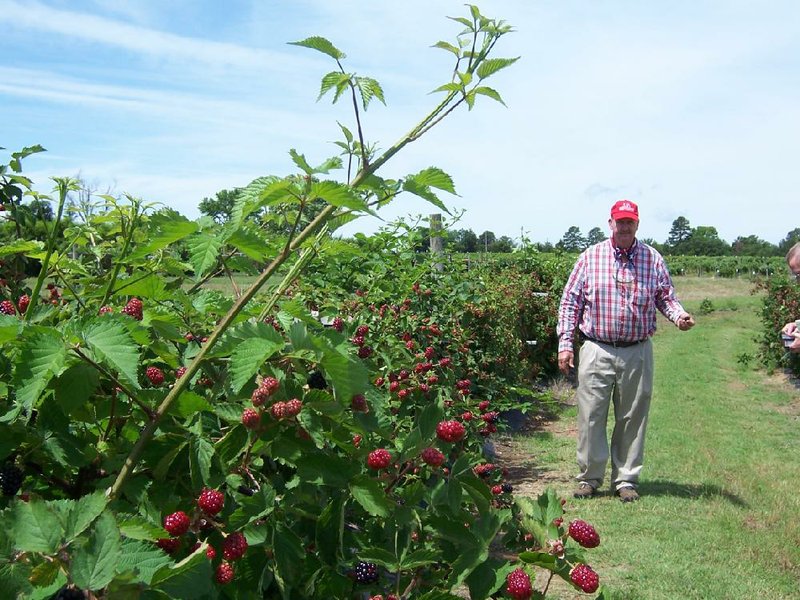CLARKSVILLE - It all started more than six decades ago when the University of Arkansas’ agriculture division established a research station to help farmers supplement their incomes by planting peach groves.
Fruit research in this Johnson County community is still going strong, having branched into blueberries, blackberries, grapes, nectarines and other fruit crops, some of which can take from nine to 20 years to develop a new variety.
“It’s something that you can’t really start and stop easily,” said Dan Chapman, resident director of the fruit research center. “It’s all done by hand pollination.”
The research station has changed and grown over the years, relocating first to Red Lick Mountain to make way for Interstate 40, then to its current location in 1965.
One drawback to the Arkansas River Valley location, Chapman said, is that high humidity promotes a disease in many plants commonly known as brown rot. Growers must spray their crops before the disease sets in, he said, and follow up with additional spraying every seven to 10 days.
John Clark, a university professor and horticulture specialist based in Fayetteville, said the mid-1960s brought a bigger vision of growing a broader range of crops in the Arkansas River Valley. Those efforts included new breeding techniques, new variety testing and overall growth in the horticulture arena.
Currently, he said, the biggest program is developing new blackberry varieties, as well as a substantial effort in table grapes. Overall, he said, the program, now in its 50th year, has released 50 varieties of plants.
The key to success, he said, is matching the plants to the right latitude. Blackberries, he said, can adapt as far south as central Florida, but they don’t thrive in the cold weather that the Midwest gets.
“You have to know what the plant can do, how it’s going to perform,” said Clark, who spends much of his time at the Clarksville research station. He recently released a thornless blackberry variety called Freedom.
Travis Stephens, chief executive off icer of the Clarksville/Johnson County Regional Chamber of Commerce, said the fruit research station is “absolutely” a plus for the region.
“I feel it’s a great asset to our community as far as education,” he said.
The research center, Stephens said, is very involved with local growers but also works with growers acrossthe state.
“It’s great for our local people. They’re always good for a tour,” he said. “It’s really a fascinating thing they’ve got going on.”
Beyond that, he added, “The best fruit I’ve ever had has come from that research station. The grapes out there are absolutely wonderful.”
As interest in grapes and other fruits has gained ground, interest in apple production appears to be on the wane, Chapman said.
“These days, we’re not doing much with apples. We’re winding down that research,”Chapman said. “There’s very few apple groves left, and those are mostly in Northwest Arkansas.”
According to the U.S. Department of Agriculture, the values of selected crops in Arkansas in 2012 were:
Blueberries: $660,000.
Grapes: $1.28 million.
Peaches: $4.6 million.
Pecans: $2.97 million.
Tomatoes: $18.2 million.
Watermelons: $6.73 mil
lion.
Business, Pages 61 on 06/23/2013

